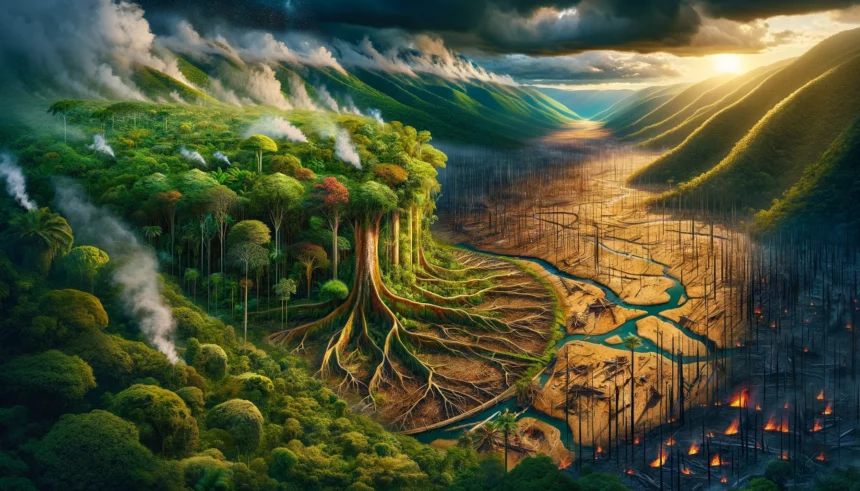A new study has raised alarms about the Amazon rainforest, indicating that up to 47% of this crucial ecosystem, often referred to as ‘the planet’s lungs,’ could be at risk due to climate change, deforestation, and fires by 2050. Researchers from the Potsdam Institute for Climate Impact Research (PIK) in Germany have highlighted the severe implications of the southeastern Amazon in Brazil transitioning from a carbon sink to a carbon source.
“The current amount of human pressure is too high for the region to maintain its status as a rainforest over the long term,” said PIK scientist Boris Sakschewski. He emphasized the potential for a self-propelling feedback loop, where loss of forest in one area could lead to further loss elsewhere, due to the interconnected nature of the rainforest’s moisture enrichment of the air.
Crossing the Amazon’s tipping point could trigger catastrophic domino effects for ecosystems worldwide, alongside other global thresholds like the collapse of major ice sheets and coral reefs. The Amazon’s crucial role in the South American Monsoon system underscores the broader impact of its loss, not only affecting local biodiversity but also escalating global warming by releasing stored carbon.
The study, published in Nature, outlines five critical thresholds that must not be exceeded to preserve the Amazon’s resilience. These include limits on global warming, annual rainfall, rainfall seasonality, dry season length, and deforestation levels. Exceeding these boundaries risks abrupt transitions to savanna-like vegetation, exacerbated by droughts and fires.
As the world faces the challenge of global heating and direct threats to the forest, the study warns that a significant portion of the Amazon is on the brink of irreversible change. The potential for degraded or permanently altered forest states poses a dire warning for the preservation of this vital ecosystem and its function in the global climate system.
















